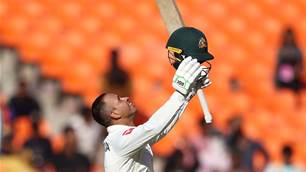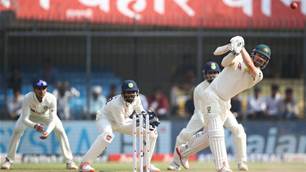After watching the Australian top order scorch scoreboards at home, our batsmen are yet again dragged down by subcontinental gravity. How come?
The most common answer is conditions, which is correct, strictly speaking. But that doesn’t begin to cover how different playing in the subcontinent is – even a good player of spin, a threshold that many Aussie Test batsmen don’t measure up to, can find how it spins in India to be unsettling.
Australian captain Steve Smith has an insightful way of explaining Indian conditions. “It’s hard to see – when I was younger watching tours of India on TV, I was like: ‘What’s going on here? Why can’t these boys play?’” he told Inside Sport. “Until you’ve actually done it, it is completely different.”
Smith said during his first few visits to India, he found the local net bowlers harder to face than the Test-quality spinners on his own team. “Just because they know how the ball behaves on those wickets – if one of the bowlers bowled a ball in Australia with the seams coming backwards a little bit, it would skid on in Australia. In India, some balls skid on, but some bite.
“It’s kind of understanding and watching the ball so closely that you can identify what it’s going to do. It’s still hard to predict, because it’s so inconsistent, but you get a fair idea. And you can only do that by experiencing it.”
Smith has gathered enough experience that his average of 43 through the first two Tests of the series stands like a monument. Young opener Matt Renshaw has also won admirers in averaging 41. But the rest of the Australian batsmen languish in the twenties (small sample size alert!)
One of them, Peter Handscomb, is at 20.25 after making two tons and another pair of half-centuries in his first seven Test innings, all during the domestic summer. Although he’s on his first Test tour of India, he’d been to the country before on a tour with Australia A.
Handscomb said adapting the conditions was one thing; another was the quality of the opposition, which included former Indian Test bowlers. “Getting used to the conditions – It was nice to see how they behave and how I needed to bat on those wickets.
“I’d been to Chennai before for two weeks on an Academy tour, and also to Colombo in Sri Lanka. So I’d had a little bit of practice in the subcontinent, but it wasn’t exactly against blokes like Ohja or Mishra.”
It’s fast dawning on the cricket-watching public that an innings of 30 can be valuable in this series, and half-centuries can be a match-turner. With another dubious pitch on hand for the third Test in Ranchi starting Thursday, a hard day’s batting – if it lasts a day – is set to continue.
Related Articles

Playing From The Tips Ep.97: Pebble Pro-Am, Webex Murrary River, LPGA TOC & more

Khawaja’s century leads Australia’s strong start













